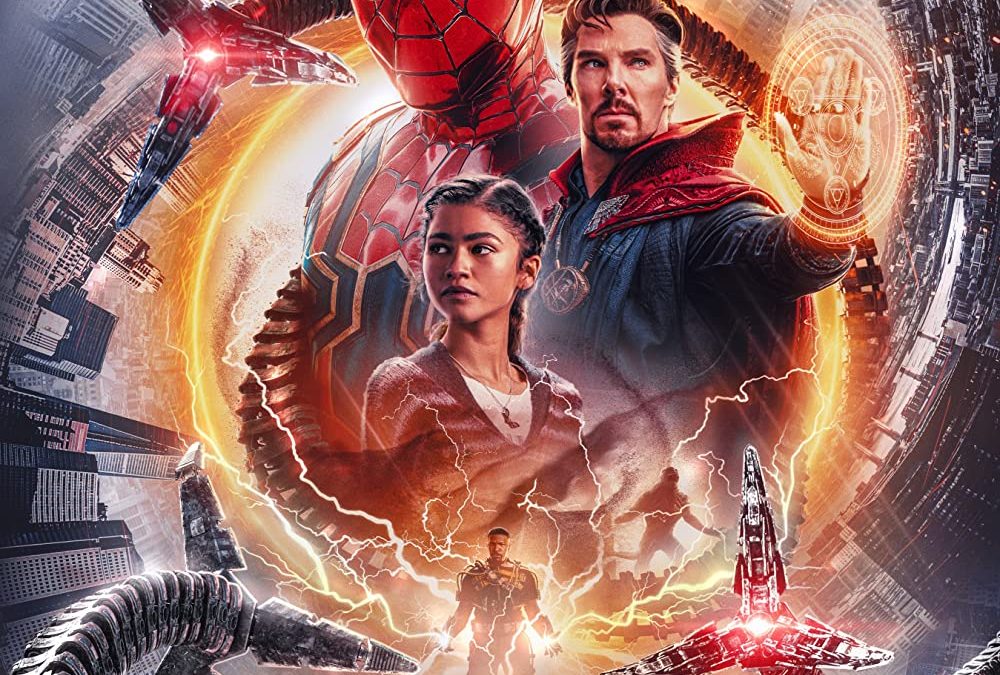Spider-Man: No Way Home, possibly the most anticipated film of the year for Marvel and Spiderman fans (and anyone with common sense) lived up to its acclaim if not surpassed it. All of the fans’ expectations for this film were satisfied as well as supplying iconic scenes that gave us even more than we realized we needed. There was not a dull moment in this film, the genius comic relief gives us time to relax in between and during the scenes that break our hearts or make us scream with excitement. Even characters that were made for a good laugh still had meaning; every scene had a purpose in making the film as good as it is. The film starts off after Tom Holland’s Spider-Man: Far From Home. The stress given to us at the end of Far From Home is continued while keeping the beginning of the movie light and funny, dealing with the small questions left unanswered about Peter Parker’s family and friends. There was major character development from all the characters we know and love from the MCU Spiderman movies. This movie is a must-see.
WARNING: SPOILERS BELOW!
While our questions were answered in an easy and funny way, our expectations of cameos were more than fulfilled. Marvel gave us all the characters we wanted from past Spider-Man movies in a beautifully cinematic way that has still not left the minds of many Spider-Man fans. We were given nostalgia while fulfilling cinematic expectations. Andrew Garfield’s appearance gave us an overload of excitement. The scene when he first appears was amazing, filled with dramatic imagery while allowing us a laugh because of the dialogue between Andrew’s Peter, MJ, Ned, and even Ned’s Lola. We were given the same thrill of anticipation when Tobey’s Spider-Man entered the scene. We got to dive into everything all the Spider-Men had gone through and the villains they fought. They also got to connect through their trauma and be there for each other, from the scene where they are giving each other some swinging advice and comparing their webs to the scene where Andrew’s Peter saved MJ, doing what he couldn’t do for Gwen.
Holland’s Spiderman dealt with his sense of identity and grief throughout the film when his last parental figure, his Aunt May, dies. He tried to be the version of himself that she pushed him to be by helping the villains around him, but his fight to be good resulted in her death. He was then blamed by society and the press for creating destruction and hurt to everyone around him, and he began to blame himself for her death. His innocent character was taken away as he learned how it felt to be perceived as the hero and the villain, and he struggled with what it meant to him. Throughout this personal journey, Garfield’s and Maguire’s Spider-Men were there for him to help him deal with his guilt and grief so they could save the world.
We see Peter’s character development throughout the painful and funny scenes and it is completed in the end when he has to sacrifice everyone he loves knowing him and losing the people he has left. He has to let everyone forget who he is, he loses his best friend Ned and his chance at the future with MJ. The lessons his Aunt May taught him stayed with him even through the struggle of deciding what it would mean for him to be what she wanted him to be and allowed him to complete his full character arc into becoming a hero.
Before Aunt May’s devastating death she said the iconic line, “With great power, there must also come great responsibility”. This line is demonstrated in all Spider-Man films, but in No Way Home, it may have caused the most drastic transformation. From his guilt over her death and then his acceptance truly showing the nature of this line, Holland’s character internalized May’s words more than any Spider-Man before him.
The true test of Peter’s selflessness was at the very end of the film, when everyone had forgotten him and he decided to let MJ and Ned continue to forget him, because he saw that MJ’s cut was healing without him, that she would get hurt knowing him, and that letting her forget him would be better. So he lived without the girl he loved to keep her safe. And that more than anything was the way to show that he had truly become a hero. He completed the arc created throughout his trilogy of loss and acceptance, changing the innocent 17-year-old boy we started with at the very beginning of the Spider-Verse into a true hero.


Recent Comments